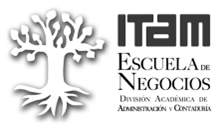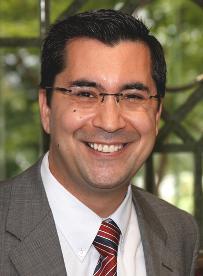|
Current Research
Heterogeneity, Matching, and The Hedonic Structure of the Credit Market
This paper develops a matching model between entrepreneurs and financial intermediaries to explain the assortative organization of credit relationships and the heterogeneity in the equilibrium contracts. The diversity in credit sizes and interest rates is determined by the optimal sorting and the matching incentives from supply and demand for credit given the differences in the intermediation costs, the competition induced by the heterogeneity on productivity of both entrepreneurs and intermediaries, and the prices of other relevant markets. To assess the implications of the framework, this paper works with a unique collection of databases that combines information from banks, firms, and credit contracts for the entire Mexican commercial credit banking system from 2004 through 2007, and uses the observed expansion in banking activity in Mexico during 2006 and 2007 resulting from a change in the law allowing the introduction of new commercial banks. The preliminary analysis shows: i) evidence of positive correlation on several productivity measures between intermediaries and firms; ii) an increase in the creation of corporate credit; iii) a steady displacement of loan size distribution toward low credit sizes; iv) a higher concentration of new contracts on upper interest rates; v) a negative relationship between credit size and the contractual interest rate; vi) a relative specialization of banks toward different types of credit; and vii) a higher growth of credit to small firms. These findings are consistent with the results implied by the proposed framework given an exogenous increase in the degree of financial access and strong complementarity between intermediaries and entrepreneurs.
Financial Access, Banking Policies, and Household Decisions: Evaluating the Role of Developing Banking and Microfinance Institutions in Mexico. Joint with Robert M. Townsend (MIT/USA). (Work in progress).
The purpose of this document is to evaluate the impact of microfinance services over the welfare of Mexican households, studying the incidence of financial access on promoting entrepreneurship on poor households. A series of complementary structural models are proposed for assessing these impacts on both: i) the micro effects on household decisions; and ii) the macro implications on the economic development. The exploratory analysis presents evidence that supports the hypothesis of financial constraint faced by the households to start a firm. In particular, once we control for schooling and other relevant regional covariates, wealthy households have a statistically and significant higher probability of running a firm, which is consistent with a model in financial autarky.
Banking and Competition in Local Markets: Assessing the Effects of Entry on the Mexican Corporate Credit Market Joint with Matias Tapia (PUC/Chile). (Work in progress).
This paper analyzes how the evolution of competition, both at an aggregate and regional level, has affected the number of credits, and their characteristics in terms of size and interest rate. This research contributes to the empirical literature on banking and corporate credit by using a unique dataset on Mexico´s banking sector for 2004 to 2007. This period is characterized by rapid expansion of outreach and financial depth in Mexico, following a liberalization in banking regulation of 2004. Our data combines three sources of information. First, quarterly data on the financial statements of all banks operating in the country. Second, a monthly census (R04) on all new corporate credit issued in Mexico. Third, a nationwide quarterly survey on Mexican firms (SIEM). The combination of the three sets allows us to construct a detailed quarterly database, which describes new individual credits in terms of the characteristics of the bank and firm associated to them, as well as in size and associated interest rate. We use this dataset to address two sets of issues. First, we analyze the evolution of the distribution of credits and their characteristics across firms and banks, studying the role of features such as the firm´s age or exporting status, or the bank's ownership (foreign and domestic) and size. Second, we analyze the role of various measures of regional banking concentration and competition in the extensive (the number of credits) and the intensive margins (their size and rate.)
Welfare Gains from Withdrawing Consumption Risk: Measuring the Benefits Distribution from the Public Health Insurance Expansion in Mexico (Work in progress.)
This paper presents a proposal for measuring the welfare gains from the expansion in public health insurance policy. For this purpose, it estimates the distribution of gains from reducing the risk in the net consumption that households face after the policy is implemented. In this case, a change in the relative risk of the households, due to health insurance coverage, is similar to a subsidy in the relative price of the risk faced by the households otherwise. Using preliminary results based on the Mexican National Household Income Expenditure Survey (ENIGH) for 2004, the paper offers evidence that suggests large differences in the relative consumption risk between insured and uninsured households within each decile, and across deciles; particularly, the data shows that households led by women at the bottom of the income distribution are relatively more vulnerable to out of pocket expenditure shocks, and present a relative higher mean and variance when measured as percentage of their income. Finally, this research performs a calibration exercise to test the implications of the model for the expected gains under different mean-variance specifications, for a typical low income household. For a household with risk aversion of 1 and facing a health expenditure shock with mean-variance of 8 to 25 dollars per quarter, the insurance policy would imply a consumption gain of 2.5 percent, and the willingness to pay would be 3.5 dollars per quarter.
Are Formal and Informal Labor Market Wages Different? Analyzing the Gains and Losses from Formalization in the Mexican Labor Market (Published in: Ensayos 24(1):1-44. UANL, Mexico.)
This paper analyzes the differences on wages between formal and informal labor market and estimates the net gains from formalization using the set of treatment effects parameters, namely: Ordinary Least Square (OLS), Average Treatment Effect (ATE), Treatment on the Treated (TT), and Treatment on the Untreated (TUT). In general for Mexico from 2000 to 2003 both men and women with higher levels of education have net gains from switching to the formal sector, while workers with lower levels of education have a negative impact on their expected wages when formalizing. Moreover, large differences prevail by studying the conditional treatment effects, yet they reduce in the period under study. For men, the larger effects are obtained from analyzing the unconditional mean differences and the OLS effect which imply a wage gap of around 33.0 per cent in 2000, but steadily reduces to reach 25.3 in 2003. In contrast, for the same period and gender, the ATE of formality reduces this gap estimation to 14.3 percent and steadily decreases to 11.7 percent. Furthermore, the TUT effect of informal workers seems to be even smaller and also decreasing in time, from 7.5 to 2.6. The estimations for women are significant, and qualitatively similar. Therefore, the evidence on this paper suggests that sorting through self-selection accounts for a large fraction of the observed difference between formal and informal wages.
Compensatory Education and Learning Abilities in Rural and Indigenous Schools in Mexico: An Impact Analysis using Treatment Effects (With Karla G. Mendoza Lopez. Published in: La Economia Mexicana en 19 Miradas. Editorial Porrua Hnos. Mexico. ISBN: 9786074011180)
The Compensatory Programs of the National Council for the Promotion of Education (CONAFE) provide complementary learning tools to students at rural and indigenous schools in Mexico. These programs aim to give better academic conditions such as to allow for the compensation of the disadvantage between students at rural and indigenous school with respect to their peers at urban areas. In this document we propose a new methodology to analyze the gaps on learning abilities on kids assisted by Compensatory Education programs in Mexico, using a “Treatment Effect” approach. We develop a series of “conditional gaps” defined in terms of the Average Treatment Effect (ATE), Treatment on the Treated (TT), and Treatment on the Untreated (TUT) once we consider the non-randomness of program attendance. For this matter, we use a unique series of databases named “Estandares Nacionales” which measures learning abilities on Spanish, and Mathematics, for students in basic and lower secondary education in Mexico, and combine these databases with information on teacher’s classroom practices, household basic information, and school environment. We follow a cohort of students starting in second year of basic school in 1998 until they reach lower secondary in 2002, and combine the learning abilities with information on school, and family background, to analyze the trends on the differences in learning abilities with and without being in a treated school. In general, we find evidence suggesting that for our proposed gap measures, ATE, TT, TUT, there is a reduction in the ability gap for Mathematics of 4.01, 2.05 and 6.57 per cent during the primary education (first 6 years of elementary education.) On Spanish, for the same period of education, there is also a small reduction in the conditional gaps ATE, TT, and TUT of 2.76, 2.39, y 2.92 per cent respectively. |
|
Last update: September 26th, 2010. |
|
Jorge O. Moreno Assistant Professor in Finance and Economics
Research Fields: Theory of Financial and Banking Intermediation, Corporate Finance, Economic Development and the Financial System.
Human Capital, Microeconometrics, Economics of the Household and the Firm.
Curriculum Vitae:
Contact Information: ITAM - Escuela de Negocios Rio Hondo No. 1, Col. Progreso Tizapan MEXICO
(52) 55-5528-4000 Ext. 3423 |
|
Research |
|
Teaching |
|
Welcome to my webpage. I am full-time professor and researcher in finance, banking, and economics at ITAM School of Business Administration. |
|
[Short] |
|
[Long] |
|
ITAM - Escuela de Negocios Rio Hondo No. 1, Col. Progreso Tizapan MEXICO |

|
SCHOOL OF BUSINESS ADMINISTRATION |


|
|
|
|